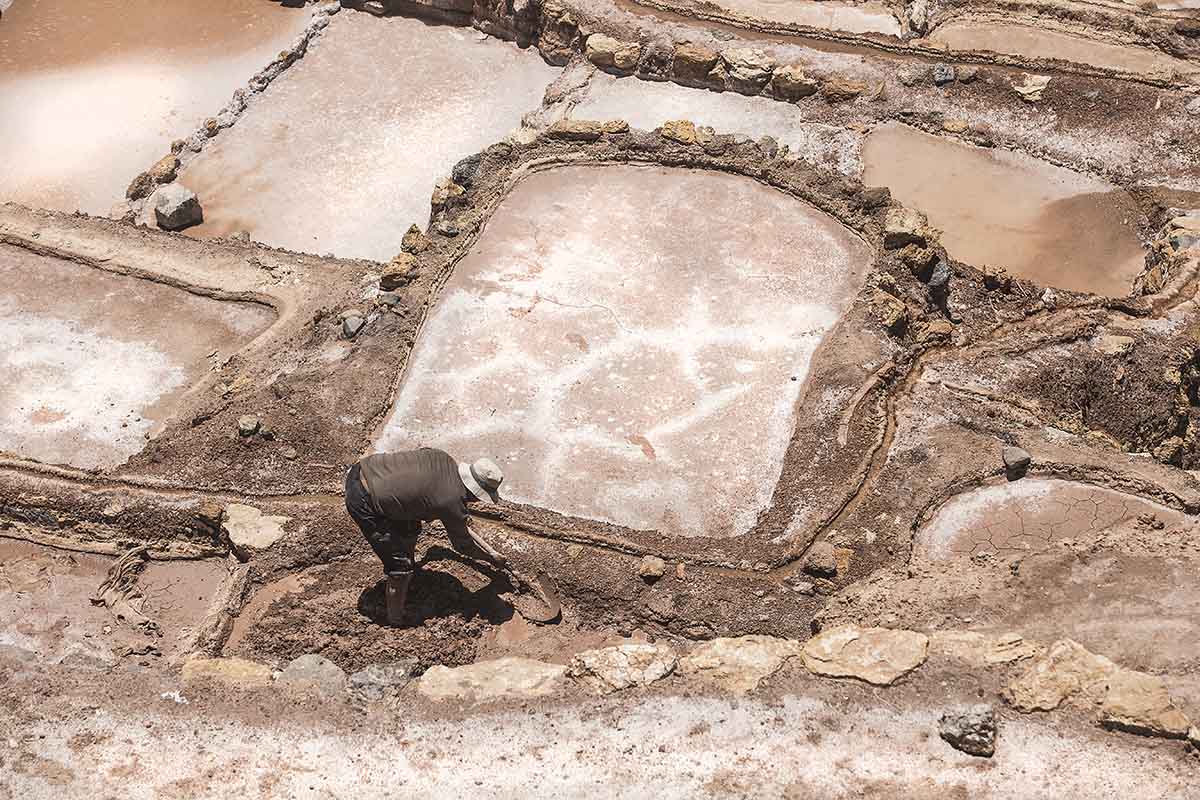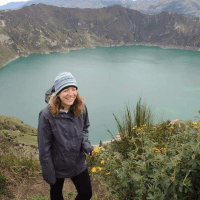The experts in boutique travel To Peru and South America

Salineras de Maras are an amazing patchwork of salt ponds that climb up the steep hillside. Since pre-Inca times, locals have been mining salt from the local, mineral-rich stream. Maras is a unique and picturesque addition to any trip to Peru. Learn more about the site’s history and how to visit below.
*Cover photo by Liz Sperling for Inca Expert Travel.
The Salineras de Maras, or Maras salt mines, date back to pre-Inca times. They are also the largest prehispanic salt mines in Peru.
Historians know little about exactly who created the mines and when. However, archeologists have found evidence of civilizations in Maras since around 700 BCE. Of course, when the Inca came to power, they oversaw the area’s salt production.
Surprisingly, though, the Spanish conquerors never took over the local salt production. Even after the Conquista, locals continued to maintain the Maras salt ponds. In fact, since their creation, salt mining has never paused at Maras.

To this day, only locals of the communities of Maras and Pichingoto control the salt mines. Individual ponds belong to families living in these communities. They are then passed down from generation to generation. Also, when someone marries into the community, a new pond is created for the new couple.
The Marasal S.A. company oversees the commercialization of Maras’ salt. The profits are then divided among the 400 or so local families that own the ponds.
UNESCO is currently considering Maras as a possible World Heritage Site.
There are approximately 4,500 salt ponds stacked on the hill next to the town of Maras, all owned by local families. Each pond measures about 13 square feet (4 square meters) made with stone and mud mortar walls.
Pre-Inca communities discovered a naturally salty underground stream. They then developed channels to direct the stream into the ponds. To this day, locals use channels to fill thousands of ponds with salty water.
To produce salt, the salt miners fill their ponds a couple of inches (about 5 centimeters). They then let the water evaporate for about three days. They repeat this again and again for about a month. By then they will have 3–4 inches (7–10 centimeters) of salt. Each well can produce 330–440 pounds (150–200 kilos) of salt per month.

The majority of salt production takes place during the dry season from May to October. This is when the water from the ponds evaporates the fastest. It is also when the best quality salt is produced.
Maras salt, or sal de maras, comes in three varieties: pink, white and brown. When the evaporation process is complete, the salt appears in these three layers.
The pink Peruvian salt is the top layer. It is the highest quality salt and destined for gourmet kitchen use. As the name suggests, it comes in a light pink shade. Its richness in minerals from the local stream gives it a tasty flavor.
The second layer is white salt. This so-called “bulk salt” is also destined for kitchen use. It is also rich in minerals but is not quite as distinct in flavor as the pink salt.
The third and final layer is brown salt. This type is exclusively used for agricultural and industrial use. During the rainy season from November to April, the majority of the salt produced is brown salt.

The Salineras de Maras are located at 10,500 feet (3,200 meters) in the Sacred Valley, 32 miles (52 kilometers) from Cusco. The main road leaving Cusco in the direction of Chincheros will take you close to Maras. However, the last few miles to the site are through poorly marked roads.
It’s possible to visit Maras on your own by renting a car or navigating public transportation. But it’s much more convenient to visit with a tour.
Opening hours: 8 a.m. to 5 p.m.
Entrance ticket: 10 soles (about US $2.75)
Sacred Valley Tours:
Because of their proximity, it’s easy to combine a visit to Maras with the Moray Inca terraces. After pick-up at your Cusco hotel (or Sacred Valley) head to the Maras salt pans. Look at the patchwork of wells as your guide explains their history and function.
Afterward, head to Moray. The Incas once used these intriguing concentric terraces for agricultural experiments. After your visit, you’ll be dropped off back at your hotel.
A private Maras, Moray and Ollantaytambo Tour is included in all of our Machu Picchu specials!
There are a few local hiking trails that lead to Maras (and also onwards to Moray). The best starting point is from Urubamba, less than ten miles (15 kilometers) away.
It is possible to hike there without a guide. In fact, you can ask your hotel reception or concierge for directions to the site. However, for extra assurance that you won’t get lost, you can hire a guide to go with you.
The same hiking trails can also be explored by bike. Some Sacred Valley hotels offer mountain bikes for rent that you can then take to Maras. Otherwise, you can book a mountain biking tour with professional guides and equipment.
There is also a mountain biking trail that connects Maras and Moray. It’s a pretty steep and rocky downhill so make sure you are wearing protective gear!
Saddle up and explore the Sacred Valley landscape on horseback. Most tours will take you to both Maras and Moray. The bridle path to Maras is fairly steep so remember to lean forward in your saddle.

For those looking for an adventurous but less strenuous way to visit Maras, an ATV tour is perfect. Like the horseback riding tour, ATV excursions will usually take you to both Maras and Moray.
The best time to visit the Salineras de Maras is during the dry season from May to October. Not only will you have sunny skies, but you’ll also see the salt ponds at different stages of production.
The dry season is when most of the salt production takes place since the water evaporates faster. You’ll also be able to see a variety of colors in the ponds, including pink, white and brown.
The shoulder season months, April and November, are good alternatives if you can’t travel during the dry season. Although you may have a slightly higher chance of rain, you’ll still have great views of the salt mines.
During the rainy season, December to March, there’s a high chance of rain during your tour. Moreover, the ponds may be completely filled with water from the rains. This is especially likely during the peak rainy months, January and February.
Whenever you are able to visit, though, you can still buy all types of salt at any time of year.

Maras is definitely a must-see when exploring the Sacred Valley. This historic and cultural monument has stood the test of time. There are so many ways to visit and enjoy the Salineras de Maras. Just don’t forget to pick up some Inca salt while you’re there!
Ask our expert Travel Advisors to include Maras in your customized travel package.

Family trips abroad gave Rachel an insatiable taste for foreign languages and cultures.

In Cusco, the festival of Corpus Christi begins when the patron saints and virgins from all the city’s parish churches gather on the Plaza de Armas. Loaded with Andean symbolism and accompanied by brass bands and brilliantly costumed dancers, Corpus Christi in Cusco is truly a sight to behold.

Arequipa is a true traveler’s paradise. Cobblestoned streets, fairytale architecture, and the looming presence of Misti Volcano all make for fantastic photographs.